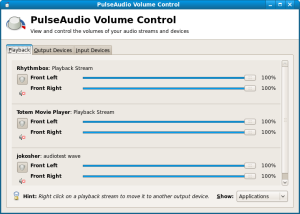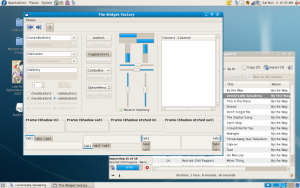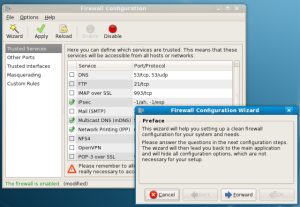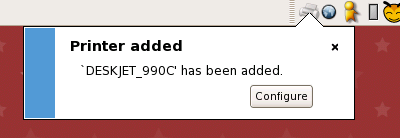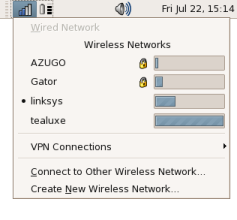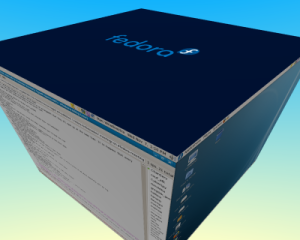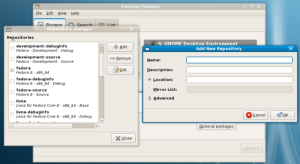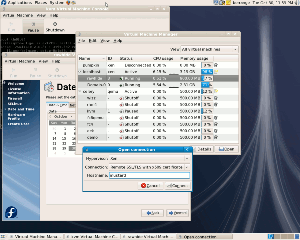Ladies and Gentlemen, it is my pleasure to let you know that Fedora 8 (codename Werewolf) has been released a few minutes ago and it can be downloaded here! Hey, hello... Are you still here? I hope so, because I want you to learn about the new features that Fedora brings with this new and heavily improved version, features that can beat (or not) Ubuntu 7.10 in some areas. Ready? Let's roll!
PulseAudio
Oh yeah! Everybody talks about PulseAudio these days, about what it is and what it can do. Honestly, I wanted to try it myself, but when I saw the setup tutorial for it I said that I'll wait for a distribution to release it first and then I will see what it can really do. Well, here it is... Fedora 8 - the first Linux distribution to feature PulseAudio! Ubuntu users will have to wait until April 2008 to taste PulseAudio's ear candy features, when implemented in the 8.04 LTS release.
So what's this PulseAudio I've been hearing here and there? PulseAudio is a sound daemon that brings ear candy to Linux users (Fedora users actually... until other distributions release it too). It allows you to have different volumes for different applications, hot-plugging support for USB sound devices, very low latency and support for audio over the network. Moreover, PulseAudio allows you to dynamically move the audio stream between applications or different systems!
Codec Buddy
Yeah, I know you've already heard rumors about this one too... Codec Buddy is Fedora's response to the magical Totem feature in Ubuntu, introduced in the 7.04 (Feisty Fawn) release, that will automatically download necessary codecs for different audio and video streams, such as MP3, DivX or DVD playback.
New Look and Feel
Fedora 8 just got pimped! It has a new wallpaper, a new default theme created especially for this version. You should know that the wallpaper is magical! Why? Because depending on the time of day it changes color to reflect outdoor conditions: at mid-day, for example, it is a bright blue, while at sunset it shifts to include a warm-orange hue.
system-config-firewall: The New Graphical Firewall Configuration Tool
You can tweak and administer the firewall settings on your system via system-config-firewall very easily in Fedora 8, you now even have a wizard for configuring step by step the firewall!
Enhanced Printer Management
When a new printer is added to the system, Fedora will automatically enable a driver and create a queue for it. If an exact driver for the printer model is not found, one for a closer model or generic driver is used.
Bluetooth integration
Gnokii can receive now out-of-band notifications for new SMSes within the AT driver, so if you have a Sony Ericsson or Samsung phone, you can finally use gnome-phone-manager.
Java Support through IcedTea
IcedTea was created to remove OpenJDK's binary encumbrances and enable Java for use on a completely free and open source system. Now, Java applets are supported out of the box for bot x86 and x86_64 architectures, thanks to an improved gcjwebplugin.
Improved Network Management with the help of NetworkManager 0.7
NetworkManager was mostly rewritten to bring better stability, flexibility and usability. Features like Bluetooth connection, dial-up networking support and more will let you do your job better.
Improved Laptop Support
For those of you who use laptops, Fedora comes with enhanced power management, better support for suspend/resume and multimedia keys through integration of more quirks. Check it out, there is more for you!
Compiz and Compiz-Fusion
Fedora 8 makes the same move as Ubuntu and installs Compiz by default, so you can enjoy the eye-candy and usability improvements. Although it is not enabled from the start, you can do that via the Preferences -> Desktop Effects menu.
Package Management Improvements
Pirut now has a fresh repository editor that eases the way you add, remove, enable and disable repositories. Some other improvements, like installing packages from physical media, will make many users glad when they use Fedora 8.
Online Desktop
The GNOME Online Desktop is a tool that transforms your desktop in the perfect window for online applications like GMail, Photobucket, Facebook, Ebay and many more. It is now included in Fedora 8's repositories, so if you want to try it, just install the "online-desktop" package.
Security Improvements
Fedora 8 comes packed up with a lot of security fixes, like the support for passwords using SHA256 and SHA512 hashing in the glibc package. Also, FORTIFY_SOURCE is now enhanced to cover C++ in addition to C, preventing a great number of security breaches.
PolicyKit: the way to easy and secure administration
PolicyKit is a new toolkit, developed for controlling privileges of all services which enables very fine grained isolation of higher privileges to small services or non-graphical applications.
Secure remote management for Xen, KVM & QEMU
From now on, libvirt Xen and KVM management API can be used from a remote host, with SSL/TLS encryption and x509 certificates for client authentication, securely and with not so many worries.
Translation Infrastructure: Transifex
Transifex is a free and open source web system that eases the process of submitting translations in various source control management systems. It was created to help translators do more stuff, by eliminating the need so subscribe to a VCS and learn its commands.
Meet Rsyslog: the new system logging daemon
Rsyslog adds a lot of advantages over sysklogd, as TCP based network transport for log messages, database backend, secure transport over the network and some other features.
Fedora Eclipse
Fedora Eclipse has been upgraded and is now based on Eclipse 3.3. Some plugins are included, which provide more functionality, like JDT - the set of tools for Java programming including advanced editors, debugging features, etc. Pydev - tools for writing python and more.
That said, go get your copy of Fedora 8 from here.
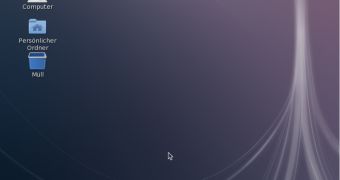
 14 DAY TRIAL //
14 DAY TRIAL // 